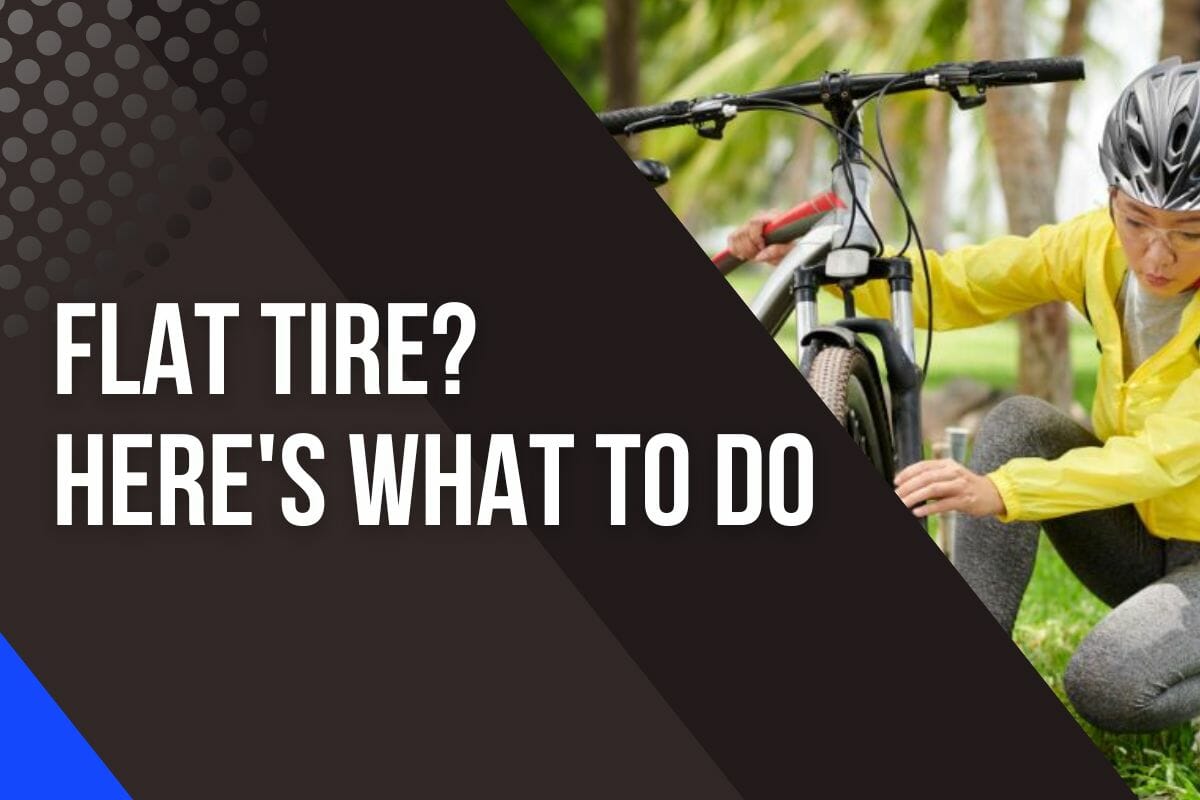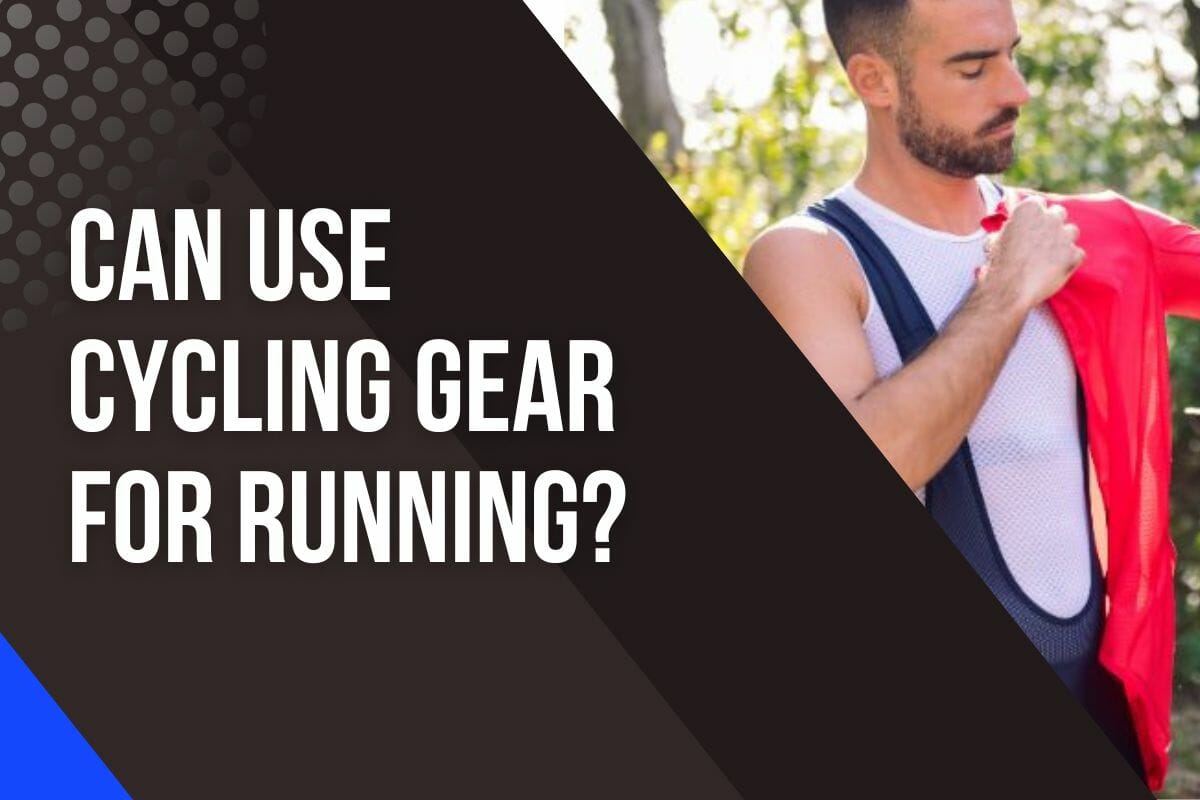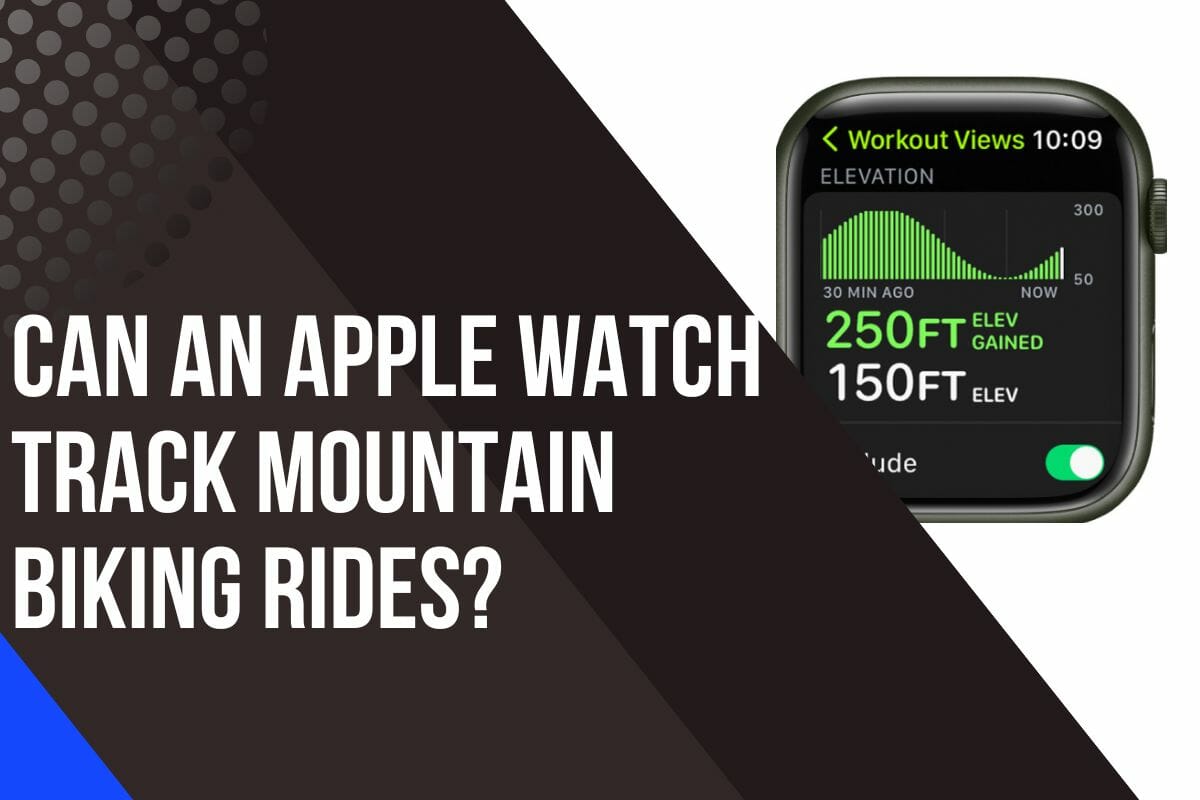Can You Cycle With A Puncture? Here’s What To Do

Have you ever been out for a leisurely bike ride, only to find that your tire is flat?
Getting a puncture can be an annoying and inconvenient experience.
It can also be dangerous if you choose to ride it anyway!
So, can you cycle with a puncture or should you stay put until you get it fixed?
In this article, we will explore the risks of riding on a flat tire, how to fix a flat tire, as well as offer some alternatives if you’re stuck without repair tools.
Let’s go over the facts and see what’s best for keeping yourself safe and getting back on the road.
Riding With A Flat Tire
You can ride a bike with a flat tire but it is dangerous and can lead to further damage and injury if you’re not careful.
The rolling resistance was so great that your speed will decrease drastically.
In hindsight, it would have been safer and smarter to take some time and repair your flat tire rather than taking the risk of continuing on with it like this.
A repair kit with a spare tube, pump, sandpaper, and patch kit would have done the trick before heading out again.

Otherwise, it may have been best to walk or find another form of transportation until you could find a bike shop nearby where you could purchase new tires altogether (or at least get them checked for slow leaks).
Riding on a flat tire is not worth the risk.
Always take the time to inspect your tires and if you suspect that they are going flat, replace them right away before you end up damaging yourself or your bike further.
The Consequences Of Riding With A Flat Tire
Flat tires are inconvenient at best and dangerous at worst which should be avoided whenever possible with regular maintenance checks being essential for safe cycling in any environment.
Several issues below will arise when you’re riding on flat tires.
1. Difficult To Control Your Bike
Riding with a flat tire is no easy task.
As soon as you lose all the air in your tires, it’s like you’re pedaling through molasses.
You can feel the rolling resistance increase drastically and it takes a lot more effort to keep your bike moving.

I recently had to ride with a flat tire on my road bike, and it was quite an experience.
The lack of air in my tires made it difficult to navigate tight turns or build momentum going uphill.
It was certainly not as enjoyable as riding with fully inflated-tires!
2. Damages Your Tire/Tube
When a tire is flat, it won’t provide enough cushioning to help the tires absorb and roll over bumps and sharp objects like rocks.
Without air, the inner tubes inside are also more prone to damage.

Even if you manage to make it home, riding on a flat can completely destroy your tire and inner tube, making it impossible to repair.
3. Damages Your Rims
Rims are designed to be stiff and responsive, but not strong enough to handle the impact of a road ride without a tire covering them.
As a result, riding on a flat caused my rims to dent and crack – something which would have been easily avoided if I had just put in new tires.
What’s more, after my ride I had to replace the entire wheel since putting a new tire on a damaged rim is not advised.
4. High Potential For Injuries
The fact that I could have injured myself if I hadn’t noticed my tire going flat hit me hard.
Without any air pressure in the tire, it can no longer remain securely locked onto the bead of the rim and can easily come off while you’re riding which could cause you to lose control of your bike and crash.

5. Damages Your Bike Frame
Even if you’re a risk-taker and decide to ride on your flat anyway, the chances of getting far are very slim.
The rolling resistance caused by the lack of air in the tire will slow you down significantly, making riding a long distance practically impossible.
What Is The Distance You Can Travel On A Flat Tire?
Based on my experience, I managed to ride on the flat tire for at least 2 miles before it became too much of an effort.
The speed had decreased quite dramatically but luckily I was able to get back safely without having to walk my bike – something which would have taken hours!
Of course, everyone has different mileage and it depends on how severe the puncture is.
How far you can ride on a flat tire will depend on the 6 factors below.
1. Tire Condition
When I had a puncture, I thought I could just keep riding and it would be fine. But after a few miles, the rolling resistance became too great and I had to stop.
The puncture had caused too much air loss for me to cycle with any speed or comfort.

The same goes for other types of flats, such as pinch flats or blowouts.
With a pinch flat, the tire wall collapses inwards when there is too much pressure on the wheel rim.
Blowouts occur when there is sudden pressure applied to the tire at high speed, causing it to explode and deflate completely.
2. Type of Bike/ Wheel
When dealing with flat tires, the type of wheel you are riding on matters.
More durable rims allow you to ride farther on flat tires.
Road bikes have thinner rims and narrower tires than mountain or BMX bikes, making them more prone to damage.
Mountain bike tires typically have deeper treads for better traction on uneven terrain and are usually made of knobby rubber for extra grip.

BMX bikes usually have even thicker tires and rims to support heavy landings from jumps and tricks.
Carbon wheels are also much stiffer than alloy wheels which flex more easily but can still be ridden in an emergency if there are some slight bends present.
3. Speed
When you had a flat, I knew it was best to slow down and take it easy.
Although you were in a rush to get home, it’s best to take your time.
Riding at high speeds on a flat can be dangerous for both you and your bike.
Fortunately, by slowing down and riding carefully, you will get home safely without any further damage being done to your bike.
4. Terrain
Riding on the flat, smooth ground can make for a relatively comfortable ride home as long as your tire holds up.
But if you’re unfortunate enough to encounter rough terrains such as craters, rocks, mud, and hard ridges then you’ll know about it!
Even the slightest bump could be enough to cause more damage to your tire and further slow down your journey.

That’s why I always make sure that I take precautions when riding on any kind of terrain.
If I’m heading off-road, I always carry a spare tube and puncture repair kit just in case I get a flat tire or decide to patch a small hole in my existing tube.
Additionally, if there’s no way around it and I find myself on particularly difficult terrain, I lower my air pressure slightly so that my tire won’t get shredded due to the increased rolling resistance.
5. Weather Conditions
When I got a flat tire on my road bike one cold winter morning, it was even more dangerous than usual.
In fact, a survey concluded that 26% of cycling accidents were caused by ice.
With the icy conditions outside, the traction was already reduced significantly.
So not only did I have to deal with the slow leak of air from my puncture, but I also had to worry about staying upright on slippery roads.
6. Bike and Rider Weight
The heavier the combination of you and your bike, the more rolling resistance there will be.
This is because the weight of you and your bike increases the force needed to move the tires forward, making them work harder and creating more friction between the tire and the road.
The tire will be prone to deflation at a faster rate, indicating that you won’t be able to make it very far.
It’s important to be aware of the extra pressure that’s being applied to the bike’s components when carrying a lot of weight.
How To Fix Your Flat Tire
Here are 5 easy steps to fix your tire. I’ve done it multiple times and it’s not as daunting as it sounds.
Alternatively, you can watch the video below explaining how you can fix a flat tire.
1. Remove The Bike Wheel
To remove the bike wheel, first, ensure the bike is upright.
Then, if you’re taking off the back wheel, shift the drivetrain.
To release the wheel, either open the quick release or unscrew the thru-axle.
When the wheel is off, you can take the tire off. However, you don’t need to take it all the way off.
2. Locate The Source Of The Puncture / Flat
To locate the source of the flat, use your fingers to feel along the inside of the rim and tire.
This makes the process easier, as you can pump air into the tube to help you find where the leak is coming from.

Doing so will make it simpler to identify the area that needs to be addressed.
Additionally, it can create a more enjoyable and unique experience.
3. Patch The Tube
If you need to patch a tube, you have two options: a glue-free patch or one with glue.
To apply either, just place the patch over the leak and press down firmly until it adheres to the tube.
It’s that simple!
If you want to be extra sure the patch will stay put, you can apply a bit of extra pressure to the patch while it’s still warm.
This will help it adhere to the tube even better.
When you’re done, give it a few minutes to cool down.
You’ll know the patch is secure once it’s dry and the tube is no longer leaking.
4. Install The Tube
Inflate the tube, and then fit it back into the tire. To do this, roll the bead away from you and place the tire on the rim.
When the tube is in the tire, it’s time to get the tire up to the right pressure.
5. Install The Wheel
To get your tire in tip-top shape, attach the wheel after you inflate it.
Make sure the drivetrain is opposite to the quick release or thru-axle lever, then close the release and secure the thru-axle.

After that’s done, lift the rear wheel and roll it to make sure everything is set.
If all goes well, you’ll be back on the road in no time.
What To Do When You Don’t Have A Repair Kit
If you find yourself out on a ride with no repair kit and your bike has gotten a puncture, don’t panic.
There are still some steps you can take to get back up and running again.
First of all, it’s important to assess the situation.
If the tire is completely flat and there’s a large hole in the tube then cycling isn’t going to be an option – even if you have access to spare parts like inner tubes or patches.
But if the tire isn’t totally flat yet, then you might be able to cycle for short distances until you can reach somewhere safer and suitable for repairs.
To do this, try pumping up the tire as much as possible before setting off.

It won’t stay inflated forever but should last long enough for you to get home safely.
Moving forward, it pays to always come prepared whenever hitting the bike trails.
Having essential tools and supplies on hand will save time and energy in case something unexpected happens while out on a ride.
Options For Transport During A Flat Tire Situation
When it comes to cycling with a flat tire, you don’t want to be stuck in the middle of nowhere.
That’s why knowing what alternatives there are is essential – so that you can get back on your bike and keep going.
The first option is to push the bicycle if you have no other alternative available.
This will not only save you energy but also give you time to think about how you’re going to fix your puncture when you reach home or a shop.
If this isn’t an option for you either because of physical limitations or the distance involved, then walking alongside your bike might be a better choice.
Your last resort could be hitching a ride with someone else who has access to a car.
You’ll need some help carrying the bike along too as well as ensuring everything fits into the car safely.
However, this way at least ensures that both you and your bike make it back safe and sound without having to worry about further damage from riding on a flat tire.
No matter which option works best for your situation, it’s important to remember that safety always comes first!
My Verdict
Cycling with a puncture is dangerous and not recommended.
If you don’t have a choice and really need to ride, try fixing and patching the tire as a temporary solution.
Ride slowly to your destination or until you find a bike repair shop.
Always take preventative measures such as regularly checking for any potential damage or tears in our tires before heading out.
Also, learn how to properly fix a puncture. This may save your life.





